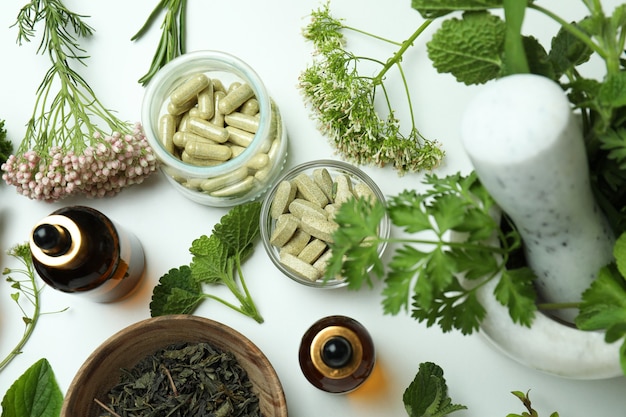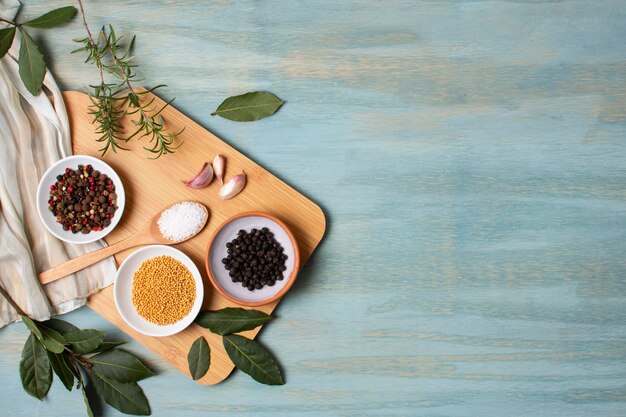Shop Now in Our Store
Marma Gulika Uses: A Comprehensive Ayurvedic Overview

Ayurveda, the ancient system of medicine originating in India, continues to fascinate both scholars and healthcare professionals worldwide. Among the numerous formulations in this tradition, marma gulika stands out for its purported therapeutic applications. But what exactly is marma gulika, how is it used, and what does modern science say about its efficacy? In this comprehensive guide, we delve into the origins, methods, potential benefits, and research findings related to marma gulika uses—all presented with scientific rigor and a balanced perspective.
Table of Contents
What Is Marma Gulika?
Marma gulika is a term that stems from the Sanskrit words:
-
Marma: Vital points in the body (commonly referenced in Ayurveda and traditional martial arts), believed to be intersections of muscles, veins, ligaments, bones, and joints.
-
Gulika: Literally translates to “tablet” or “pill,” typically referring to a medicated pill or formulation.
Together, marma gulika refers to an Ayurvedic herbal formulation, traditionally designed to support various bodily functions. According to practitioners, marma gulika is associated with stimulating or stabilizing specific vital points in the body, thus potentially promoting overall well-being.
Key Points About Marma Gulika
-
Holistic Focus: Targets the body’s energetic points or “marmas.”
-
Herbal Ingredients: Often includes a blend of herbs and minerals.
-
Individualized Formulation: The exact composition may vary depending on the practitioner’s approach or regional traditions.
Although this formulation is deeply rooted in ancient Indian texts, modern clinical data on its efficacy is still evolving. Advocates of marma gulika use it for issues ranging from digestive complaints to musculoskeletal discomfort, but the scope of its applications requires more rigorous scientific backing.
Historical and Cultural Context
In Ayurveda, marma points are considered to be critical in maintaining vitality and health. For centuries, healers have devised various herbal preparations to either protect these points or stimulate them to restore physiological balance (or “dosha” equilibrium). Marma gulika is believed to have emerged from these practices, providing a convenient way to deliver therapeutic compounds internally.
Cultural Significance
-
References in Ayurvedic Texts: Some classical Ayurveda treatises, such as the Charaka Samhita and Sushruta Samhita, discuss the importance of marma points and related treatments, though the direct mention of “marma gulika” may appear in later compilations.
-
Regional Variations: In states like Kerala, India, marma therapy is a specialized field. Marma gulika can sometimes be found in local dispensaries, reflecting traditional knowledge handed down through generations.
While marma treatments often involve massage or external application of oils, marma gulika expands the treatment scope to internal consumption. This dual approach—external manipulation coupled with internal medication—is one of the distinctive features of Ayurvedic care.
Potential Benefits of Marma Gulika
It’s important to note that the term “benefits” here is drawn from anecdotal evidence, practitioner observations, and a limited number of preliminary studies. Individual responses can vary widely. Always consult with a qualified healthcare provider before making any significant health decisions.
-
Digestive Support
-
Some users report relief from occasional bloating, indigestion, and irregular bowel movements.
-
Certain herbal ingredients commonly found in marma gulika, like ginger (Zingiber officinale) or black pepper (Piper nigrum), are known for their digestive benefits.
-
-
Musculoskeletal Health
-
Ayurveda often addresses joint and muscle discomfort through herbal formulations.
-
Marma gulika might be recommended by practitioners for mild inflammation or muscle stiffness, but confirm with a healthcare professional for long-term use.
-
-
Immune System Maintenance
-
Traditional Ayurvedic theory suggests that supporting the body’s internal balance can indirectly boost immune defenses.
-
Some marma gulika preparations may contain antioxidant-rich herbs, which could help in maintaining general well-being.
-
-
Stress Management and Relaxation
-
Marma therapy is sometimes employed to stimulate pressure points that could help relieve tension.
-
When used with marma massage techniques, marma gulika is believed to promote a sense of calm and relaxation.
-
-
Holistic Well-Being
-
A key principle in Ayurveda is aligning the body, mind, and spirit.
-
By addressing energetic pathways (marmas), marma gulika might contribute to a more balanced lifestyle.
-
Scientific Evidence and Research Insights
When discussing marma gulika uses from a scientific standpoint, it’s crucial to acknowledge the limited but growing body of research. Traditional claims often outpace empirical data, yet emerging studies point toward the formulation’s potential:
-
Phytochemical Analyses
-
Some herbal components in marma gulika, like Emblica officinalis (Indian gooseberry) and Terminalia chebula, have been studied for their high antioxidant content.
-
Peer-reviewed articles in journals such as the Journal of Ayurveda and Integrative Medicine highlight these herbs’ potential anti-inflammatory and antimicrobial properties.
-
-
Pilot Clinical Trials
-
A few early-phase clinical trials (referenced in databases like
PubMed ) suggest that herbal formulations akin to marma gulika may offer mild analgesic benefits. -
However, these studies often suffer from small sample sizes, lack of control groups, or short durations, emphasizing the need for more rigorous research.
-
-
Meta-Analyses and Systematic Reviews
-
High-quality reviews on marma-specific treatments remain scarce. Most systematic reviews tend to focus on broader Ayurvedic interventions.
-
The consensus is that more double-blind, placebo-controlled trials are needed to substantiate the health claims associated with marma gulika.
-
-
Mechanistic Studies
-
Research into how marma points interact with neurological pathways is still in its infancy.
-
Some neuroscientists hypothesize that stimulating marma points could influence the peripheral nervous system, potentially impacting pain and stress responses.
-
Note: While preliminary findings are promising, the scientific community generally agrees that conclusive evidence on marma gulika’s efficacy demands more robust, peer-reviewed research.
How Marma Gulika Is Typically Used
1. Dosage and Administration
-
Traditional Guidelines: Practitioners may recommend 1–2 tablets once or twice daily, often taken with warm water or a suitable anupan (vehicle) like honey, milk, or ghee, depending on the specific condition.
-
Individualized Approach: Dosages can vary based on factors such as age, constitution (prakriti), and the presence of underlying health conditions.
2. Combination with Marma Therapy
-
External Stimulation: Some Ayurvedic experts advise using marma gulika in tandem with marma massage or acupressure.
-
Timing: Typically, marma gulika might be consumed before or after a marma therapy session to enhance purported benefits.
3. Lifestyle Modifications
-
Dietary Adjustments: Ayurveda often recommends a balanced, dosha-specific diet. For example, a person with pitta dominance might avoid excessively spicy or acidic foods.
-
Yoga and Meditation: Incorporating gentle stretching, breathing exercises, or mindfulness techniques can amplify the potential benefits of marma gulika.
Precautions, Side Effects, and Safety Measures
Though marma gulika is generally regarded as safe when used under professional guidance, several considerations are vital for responsible use:
-
Allergic Reactions
-
Herbal ingredients can cause allergies in sensitive individuals. Discontinue use if you notice itching, rashes, or swelling and consult a healthcare provider.
-
-
Drug Interactions
-
Certain herbs may interfere with prescription medications, including blood thinners, diabetes drugs, and antidepressants.
-
Always inform your healthcare provider about any supplements or herbal formulations you’re taking.
-
-
Pregnancy and Lactation
-
Limited clinical data is available on the safety of marma gulika for pregnant or breastfeeding individuals.
-
Consult an obstetrician or qualified Ayurvedic practitioner before use.
-
-
Quality Control
-
Herbal supplements are subject to less stringent regulatory oversight in many countries.
-
Look for products from reputable manufacturers with standardized testing, Good Manufacturing Practices (GMP) certification, or quality seals from recognized bodies.
-
-
Medical Disclaimer
-
Marma gulika is not a substitute for professional medical advice.
-
Anyone with serious or chronic conditions—such as heart disease, autoimmune disorders, or diabetes—should seek personalized medical counsel before incorporating marma gulika.
-
Frequently Asked Questions
-
Is marma gulika the same as other Ayurvedic pills?
While marma gulika shares similarities with other Ayurvedic formulations in terms of herbal composition, it is distinct in its focus on marma points and their influence on overall health. -
How long does it take to see results?
Results can vary depending on the individual’s constitution, lifestyle, and the specific condition being addressed. Some users may notice changes within a few weeks, while others require longer durations. -
Can I take marma gulika alongside conventional medicines?
Consult your healthcare professional for personalized advice. Some herbs can interact with prescription drugs, either enhancing or diminishing their effects. -
Are there specific dietary recommendations while on marma gulika?
Ayurvedic practitioners often advise a balanced diet tailored to your dosha. Avoiding excessively processed, spicy, or oily foods may help enhance the formulation’s benefits. -
Where can I find credible information about marma gulika?
Look for peer-reviewed articles in reputable databases likePubMed , publications from the Ministry of AYUSH (Government of India), or consult certified Ayurvedic practitioners.
Conclusion: Final Thoughts on Marma Gulika Uses
Marma gulika exemplifies the rich tapestry of Ayurvedic wisdom, blending ancient principles with contemporary insights. While traditional practitioners laud its capacity to support digestion, joint health, and holistic well-being, modern scientific research is still catching up. Preliminary studies highlight potential anti-inflammatory and antioxidant effects from the herbal ingredients commonly found in marma gulika, but definitive, large-scale clinical trials remain sparse.
If you are curious about incorporating marma gulika uses into your healthcare regimen, it is crucial to consult a qualified professional. This ensures you receive an individualized plan that accounts for your unique health profile, medical history, and lifestyle. By merging evidence-based approaches with time-tested Ayurvedic knowledge, you can make well-informed decisions about your health journey.
References and Further Reading
-
Charaka Samhita: Text of Ayurveda, English Translation by Sharma RK and Bhagwan Dash, Chowkhamba Sanskrit Series Office.
-
Sushruta Samhita: Ancient treatise on surgery and marma science.
-
Patwardhan B. (2020). “Bridging Ayurveda with evidence-based scientific approaches in medicine.” Integrative Medicine Research, 9(1).
-
Journal of Ayurveda and Integrative Medicine – Various peer-reviewed articles on Ayurvedic formulations. -
PubMed – Search for studies related to marma therapy, herbal formulations, and Ayurvedic medicine.
Disclaimer: The information provided in this article is for educational purposes and does not replace professional medical advice. Always consult a licensed healthcare provider for personalized guidance related to any health condition or treatment.
Share Your Experience
Have you tried marma gulika or other Ayurvedic formulations? Share your journey or questions in the comments below. And if you found this article useful, feel free to forward it to friends or family who might benefit. Your active participation helps us build a community centered on holistic and informed healthcare.
This article is checked by the current qualified Dr Sujal Patil and can be considered a reliable source of information for users of the site.
Got any more questions?
Ask Ayurvedic doctor a question and get a consultation online on the problem of your concern in a free or paid mode.
More than 2,000 experienced doctors work and wait for your questions on our site and help users to solve their health problems every day.



